Corydoras armatus
Scientific name: Corydoras armatus
Common name: N/A
Family: Callichthyidae
Usual size in fish tanks: 4 - 5 cm (1.57 - 1.97 inch)
014
Recommended pH range: 6.3 - 7.2
Recommended water hardness: 3 - 18°N (53.57 - 321.43ppm)
0°C 32°F30°C 86°F
Recommended temperature range: 22 - 27 °C (71.6 - 80.6°F)
The way how these fish reproduce: Spawning
Where the species comes from: South America
Temperament to its own species: peaceful
Temperament toward other fish species: peaceful
Usual place in the tank: Bottom levels
Food and Feeding
Corydoras armatus thrives on a varied diet. Provide high-quality flake or sinking pellets as a staple, supplemented with algae wafers to meet their dietary needs. For treats, offer live or frozen foods such as brine shrimp and bloodworms twice a week. These bottom-dwelling fish are most active in the evening, so feeding them during this time ensures they have ample opportunity to access food before faster tank mates do.
Origin
Corydoras armatus is native to South America, specifically inhabiting the waterways of the Upper Amazon Basin. These environments are characterized by soft, slightly acidic to neutral water, dense vegetation, and sandy or fine gravel substrates. Replicating these natural conditions in an aquarium helps them feel secure and display their natural behaviors.
Sexing
Sexing Corydoras armatus can be done by observing them from above. Females are slightly larger with a rounder, fuller body shape compared to the slimmer males. These differences become more pronounced during breeding periods when females carry eggs.
Breeding
There are currently no documented cases of Corydoras armatus breeding in captivity. In the wild, they are believed to follow the same spawning methods as other Corydoras species. Typically, females lay adhesive eggs on flat surfaces like plant leaves or tank walls, and males fertilize them externally. To encourage breeding in an aquarium, maintain pristine water conditions, slightly cooler temperatures, and provide plenty of plants or smooth surfaces for egg deposition. Fry can be fed infusoria or finely crushed flakes after hatching.
Lifespan
With proper care, Corydoras armatus can live 3-5 years. Stable water parameters, a nutritious diet, and a stress-free environment are essential for maximizing their lifespan.
Tank Setup
Corydoras armatus requires a well-maintained tank with a minimum capacity of 50 liters (~13 gallons). Use a soft, sandy substrate or fine, rounded gravel to protect their sensitive barbels from injury. Provide ample hiding spots using rocks, driftwood, and live plants such as Java Fern, Anubias, and Amazon Swords. Gentle water flow and moderate lighting mimic their natural habitat and encourage natural behaviors. Maintain water parameters within their ideal range: pH 6.3-7.2, hardness 3-18°N (53.57-321.43 ppm), and temperature 22-27°C (71.6-80.6°F).
Compatible Tankmates
Corydoras armatus is a peaceful species, making them ideal for community tanks with other gentle fish. Suitable tankmates include Neon Tetras, Ember Tetras, Harlequin Rasboras, and Otocinclus Catfish. Avoid housing them with aggressive or territorial species that may stress or harm them. Keeping Corydoras in groups of at least five enhances their social behaviors and overall well-being.
Short Description
Corydoras armatus is a peaceful and social bottom-dwelling species that thrives in small groups. Their delicate barbels require a soft substrate to prevent injury, and they prefer tanks with plenty of hiding spots and live plants. With their gentle temperament and manageable size, they are a perfect choice for community aquariums with similarly peaceful fish. Proper care and a well-maintained tank environment will ensure these charming fish remain healthy and active.
Pictures
Bought by aqua-fish.net from jjphoto.dk.



 Aspidoras
Aspidoras  Giant
Giant  Hognosed
Hognosed  Emerald
Emerald  Cascarudo
Cascarudo  Acre
Acre  Adolfo’s
Adolfo’s  Bronze
Bronze 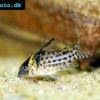 Agassizii’s
Agassizii’s  Spotted
Spotted  Skunk
Skunk 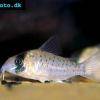 Fairy
Fairy  Corydoras
Corydoras  Pink
Pink 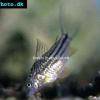 San
San  Bond’s
Bond’s  Spotted
Spotted  Tailspot
Tailspot  Concolor
Concolor  Cope’s
Cope’s 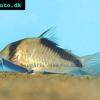 Sand’s
Sand’s  False
False  False
False 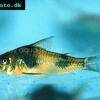 Ehrhardt’s
Ehrhardt’s  Elegant
Elegant 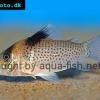 Saddle
Saddle  Fowler’s
Fowler’s  Gomezi
Gomezi 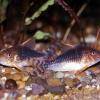 Palespotted
Palespotted 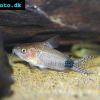 Guapore
Guapore  Dainty
Dainty  Mosaic
Mosaic  Imitator
Imitator  Julii
Julii  Leopard
Leopard 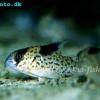 Black
Black  Slant-bar
Slant-bar  Bluespotted
Bluespotted  False
False  Bandit
Bandit  Mini
Mini 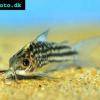 Napo
Napo  Corydoras
Corydoras 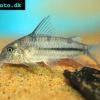 Blue
Blue  Nijssen’s
Nijssen’s 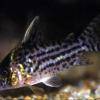 Ornate
Ornate  Peppered
Peppered  Panda
Panda  Albertini
Albertini  Pastaza
Pastaza  Corydoras
Corydoras  Many-spotted
Many-spotted  Pretty
Pretty  Dwarf
Dwarf  Iridescent
Iridescent  Reticulated
Reticulated 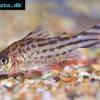 Bannertail
Bannertail  Robust
Robust  Schwartz’s
Schwartz’s  Black
Black 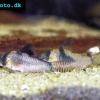 Longnosed
Longnosed  Seuss’
Seuss’  Smudge
Smudge  Masquerade
Masquerade 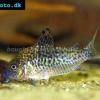 False
False  Millenium
Millenium  Pinkthroat
Pinkthroat  Sterba’s
Sterba’s  Longsnout
Longsnout  False
False  Miguelito
Miguelito 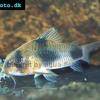 Twosaddle
Twosaddle  Xingu
Xingu 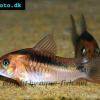 Black
Black  Porthole
Porthole  Flagtail
Flagtail  Brown
Brown  Spotted
Spotted